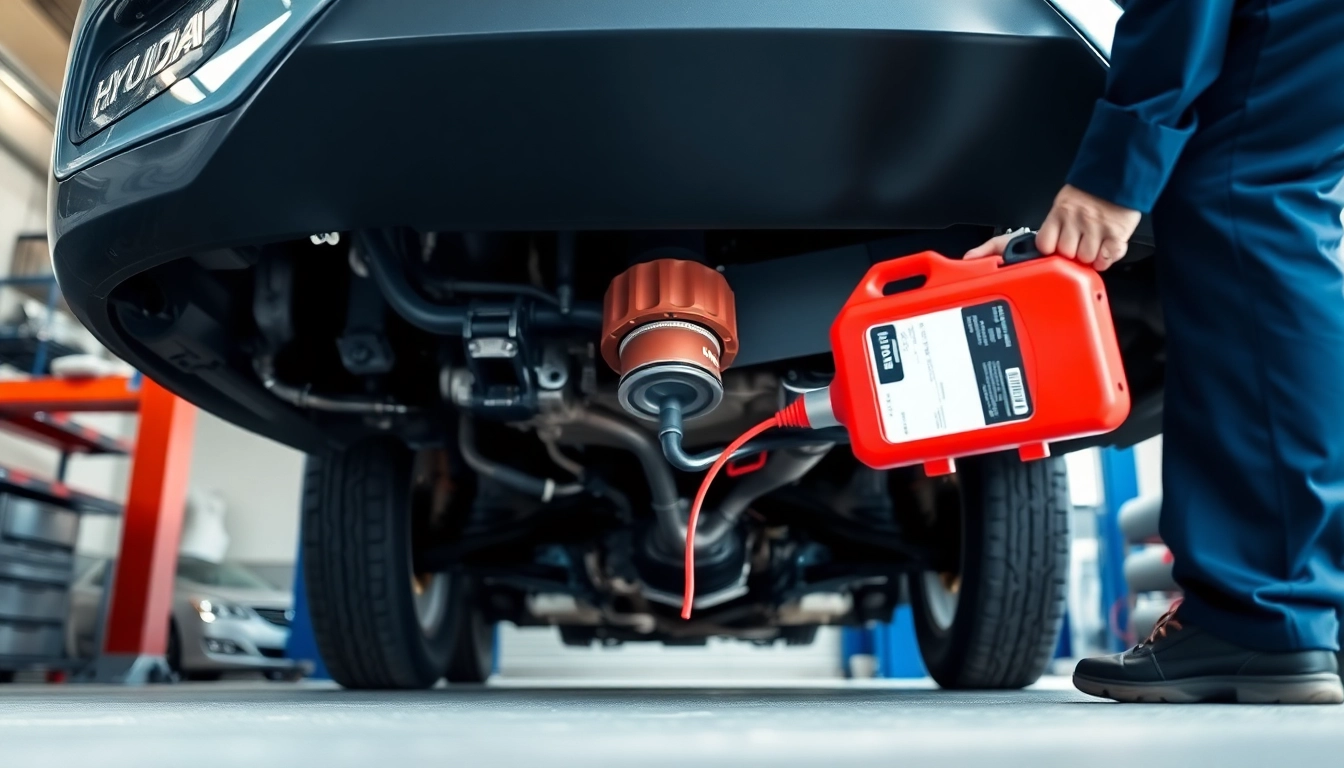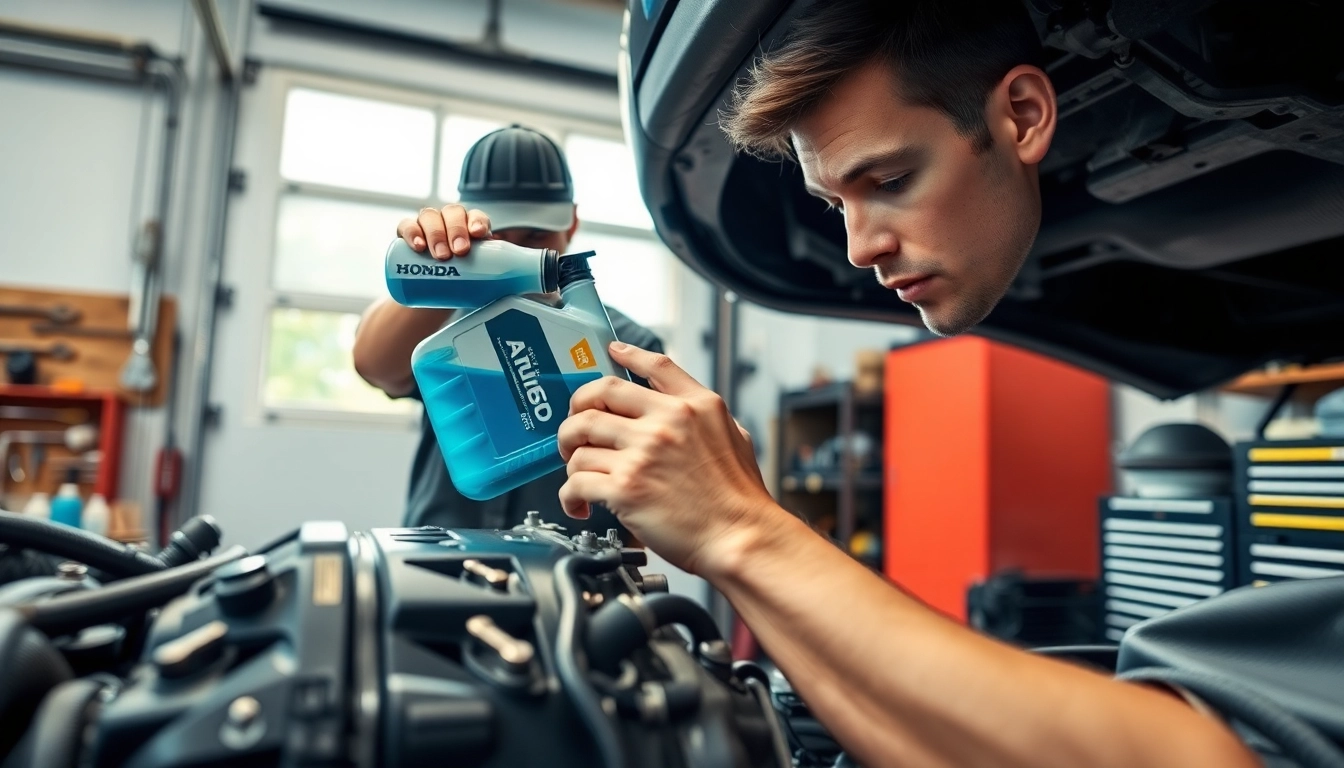Understanding Transmission Fluid Hyundai
Transmission fluid plays a crucial role in the overall performance of your vehicle, particularly for Hyundai models. This specialized fluid not only lubricates the moving parts of the transmission but also facilitates smooth gear changes and protects the internal components from wear. For Hyundai owners looking to maintain their vehicle’s efficiency and longevity, understanding transmission fluid, including type, function, and maintenance, is essential. In this article, we’ll delve into various aspects of transmission fluid hyundai, aiming to equip you with the knowledge needed for informed vehicle care.
What is Transmission Fluid?
Transmission fluid is a type of lubricant specifically designed for use in vehicles’ transmission systems. The primary purpose of transmission fluid is to reduce friction and wear between the numerous moving parts within the transmission, ensuring smooth operation. This fluid also acts as a coolant, helping to maintain optimal operating temperatures, and serves as a hydraulic fluid, enabling the transmission to shift gears effectively.
Types of Transmission Fluid for Hyundai Models
Hyundai vehicles require specific types of transmission fluid, often categorized into types like SP-III and SP-IV. These specialized fluids are engineered to meet the unique needs of Hyundai transmissions:
- SP-III: Generally used in older Hyundai models, SP-III transmission fluid is suitable for many automatic transmissions and provides reliable protection and performance.
- SP-IV: A more advanced fluid, SP-IV is designed for newer Hyundai models, offering superior performance, enhanced thermal stability, and improved fuel economy.
Key Functions of Transmission Fluid
The functions of transmission fluid can be broadly categorized as follows:
- Lubrication: Minimizes friction between moving parts, reducing wear and prolonging the life of the transmission.
- Hydraulic Operation: Facilitates the movement of parts within the transmission by providing hydraulic pressure.
- Cooling: Disperses heat generated during operation, thereby maintaining optimal temperatures within the transmission.
- Contaminant Removal: Helps carry away contaminants and debris that might accumulate in the transmission, ensuring clean operation.
Common Signs of Transmission Fluid Issues
Recognizing the signs of transmission fluid issues is vital for preventing serious damage to your vehicle. Regular checks and understanding of these warning signals can help maintain your Hyundai’s performance.
Checking Fluid Levels: What to Look For
Under normal conditions, the transmission fluid in your Hyundai should be bright red, nearly clear, and free from particles. To check the fluid levels:
- Start your vehicle and let it idle for a few minutes.
- With the engine running, locate the transmission fluid dipstick.
- Remove the dipstick, wipe it clean, and reinsert it to check the fluid level and appearance.
Warning Signs of Low Transmission Fluid
Low transmission fluid can cause several issues, including:
- Slipping gears or unexpected shifts.
- Delayed engagement when shifting from park to drive or reverse.
- Unusual noises, such as grinding or whining sounds.
If these symptoms occur, it’s crucial to investigate further and potentially replenish the fluid.
Consequences of Neglecting Fluid Maintenance
Neglecting to maintain proper transmission fluid levels can lead to significant consequences, including:
- Overheating: Insufficient fluid can lead to overheating, causing irreversible damage.
- Increased Repair Costs: Regular maintenance is far less expensive than a full transmission replacement.
- Compromised Performance: Poor fluid quality can result in erratic shifting and overall performance degradation.
How to Change Transmission Fluid in Hyundai Vehicles
Changing transmission fluid is a maintenance task that can be carried out by experienced DIYers or professional mechanics. Here’s how to do it safely and effectively.
Step-by-Step Guide to Fluid Change
Follow these steps to change transmission fluid in your Hyundai:
- Preparation: Gather necessary tools such as a wrench set, transmission fluid, funnel, and a drain pan.
- Raise the Vehicle: Use jack stands to safely lift the vehicle if necessary.
- Drain the Old Fluid: Locate the drain plug, remove it, and let the old fluid completely drain into the pan.
- Replace the Filter: If applicable, remove and replace the transmission filter to ensure clean fluid circulation.
- Add New Fluid: Reinstall the drain plug and use a funnel to add new transmission fluid through the dipstick tube.
- Check Levels: Start the engine, shift through gears, and check the fluid level again, adding more if necessary.
Tools and Materials Required
Before starting your fluid change, ensure you have the following:
- Transmission fluid (OEM recommended)
- Wrench set
- Funnel
- Drain pan
- New transmission filter (if applicable)
Tips for a Successful Change
To achieve the best results when changing your transmission fluid:
- Always use the recommended type of transmission fluid for your specific Hyundai model.
- Work when the engine is cool to prevent burns.
- Dispose of old transmission fluid at a certified recycling center to protect the environment.
Frequency of Transmission Fluid Changes for Hyundai
Understanding how often to change your transmission fluid is crucial for maintaining vehicle health. Various factors can influence this frequency.
General Service Intervals
As a general rule of thumb, Hyundai recommends changing the transmission fluid every 60,000 miles. However, this can vary based on driving conditions and your specific vehicle model. It’s wise to consult your owner’s manual or dealer for tailored guidance.
Factors Influencing Change Frequency
Several factors can affect how often you need to change your transmission fluid, including:
- Driving Habits: Frequent stop-and-go driving or towing heavy loads can necessitate more regular fluid changes.
- Climate: Extreme weather conditions may require more frequent checks and changes to maintain optimal performance.
- Fluid Quality: Monitor the color and odor of your transmission fluid regularly; burnt or dark fluid indicates a change is overdue.
Dealer vs. DIY Maintenance
Deciding whether to change your transmission fluid at a dealership versus doing it yourself depends on personal preference and experience. While DIY offers cost savings and flexibility, dealerships provide professional services backed by warranties, with access to OEM parts and fluids. Consider your comfort level with mechanical work when making this choice.
Choosing the Right Transmission Fluid for Your Hyundai
Making an informed choice regarding your Hyundai’s transmission fluid can greatly affect its long-term performance. Here’s what you need to consider:
OEM vs. Aftermarket Options
When selecting transmission fluid, you’ll often face a choice between OEM and aftermarket brands. OEM (Original Equipment Manufacturer) fluids are designed specifically for your model and are recommended for precise performance. On the other hand, while some aftermarket options may perform well and offer savings, they may not meet all specifications. Always prioritize fluids that meet Hyundai’s strict standards.
Top Recommended Brands
Several brands produce high-quality transmission fluids suitable for Hyundai vehicles, including:
- Hyundai Genuine Fluid: The best choice for OEM quality.
- Valvoline: Known for durability and protecting against wear.
- Mobil 1: Offers synthetic options that provide excellent heat tolerance and performance.
Understanding Specifications
When purchasing transmission fluid, understanding specifications is critical. Look for products labeled SP-III or SP-IV, as these will align with Hyundai’s requirements and ensure your vehicle operates smoothly. Always refer to your owner’s manual to verify the specifications suitable for your specific model.
Final Thoughts
Taking the time to understand and maintain your Hyundai’s transmission fluid can lead to greater reliability, prolonging the life of your vehicle while enhancing its performance. Regular checks, timely changes, and informed product choices are key components to successful vehicle maintenance. With the insights provided in this guide, you’re better equipped to take charge of your Hyundai’s transmission health.



